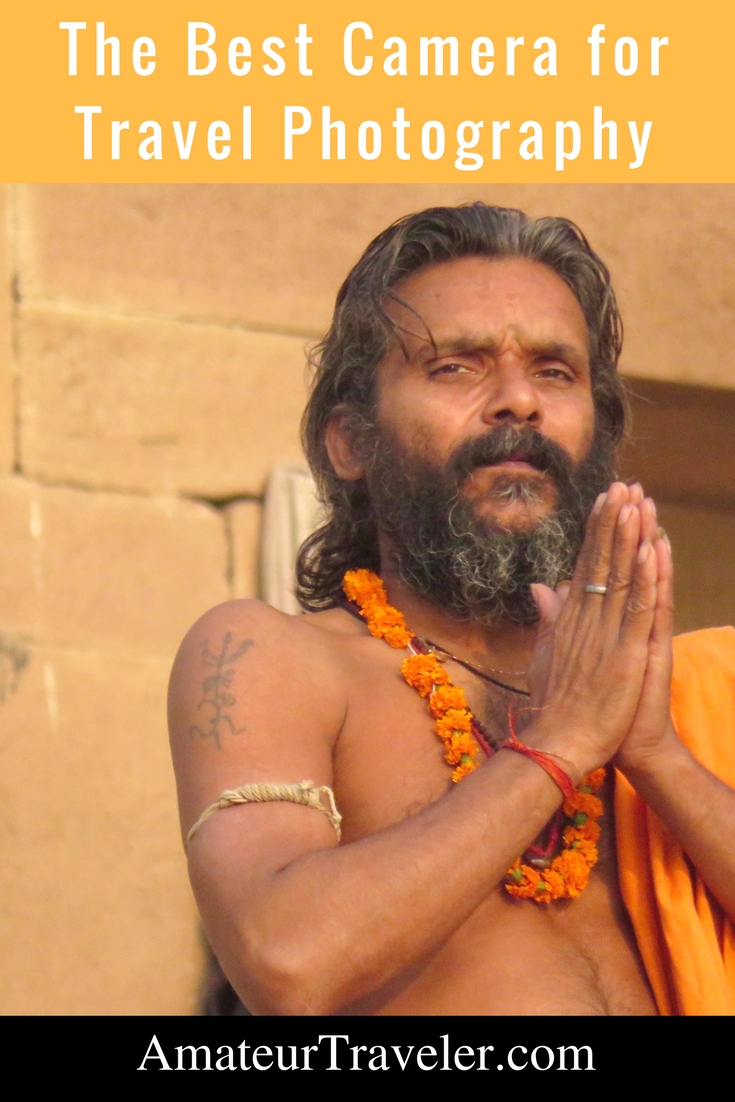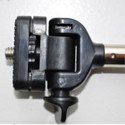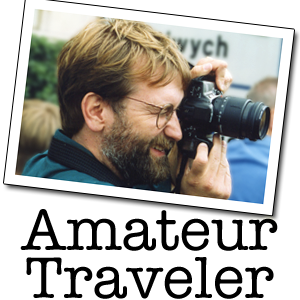If you are like me, some of your most treasured souvenirs from your travel are your photos (see mine). Which camera you bring will make a difference on the quality of those photos.
Twice in the last three years I have left a camera behind while traveling. One was left in a Buenos Aires taxi and a second disappeared from a rental car in Northern Virginia. So I have had 4 main cameras in the last few years and can provide some perspective on a few different camera options:
SLR Camera
My usual camera for the last few years was an SLR (Single Lens Reflex) camera, specifically a T5i from the Canon Rebel line of cameras.
An SLR has a number of advantages. With an SLR when you are setting up your picture (framing your shot and focusing) you are looking through the actual lens that will be used to shoot the photo, so what you see is closer to what you will actually get in your final photo.
There are a few parts of the camera that are key to the quality of the photos you will take. One is the quality of the lens and the other is the size of the sensor. The sensor is what replaced the film in an old film camera. It is where the light hits the electronics and is turned into a picture. A larger sensor will, as a rule, enable the camera to capture more light and let you take photos in a darker environment. A “full frame” camera has a sensor that is the size of an old frame of film.
SLR cameras also have more flexibility than a point and shoot camera which has a built-in lens. With an SLR camera, you can usually change lenses.
Another factor to look at in an camera is how fast it can take different photos, especially if you want to take pictures of a sporting event or an action shot like a safari trip. Most SLR cameras are good at this kind of burst photography.
Most professional photographers will shoot photos in raw mode, rather than have the camera create jpeg images. When you “shoot in raw” then you will need to spend more time editing your photos later but you will get the best photo you can for the shot you take. Raw photos will take up a lot more space on your camera and on your computer.
Most SLRs these days can also shoot high definition video. Entire movies and TV shows can be shot on an SLR with some great results. The biggest issue is sound. If you do want to shoot videos, I would recommend getting a camera with an external mic jack so you can add a shot gun mic or a lavaliere microphone.
My Experience
The Canon T5i camera I used is not the top of line Canon camera but more of a prosumer model. One of the reasons I was using a Rebel is that when I travel to a country like Morocco, Cambodia or India then I know that the cost of my camera can easily be more than a year’s wage for some families. A more expensive camera makes you a bigger target for property theft. Also if you are going to start handing out cameras to taxi drivers on a regular basis, as I appear to be doing, then that lost or stolen camera will hurt less if it is less expensive.
Despite the fact that my camera could take multiple lenses, I found that traveling with multiple lenses was a hassle. I never had the right lens on the camera for the shot that I wanted. I found it better for travel to have a flexible lens so I could take the shot I wanted before I lost the opportunity. I needed a lens where I could take the wide shot and then zoom in and take a more detailed shot.
My standard lens was a Tamron AF 18-250mm zoom lens which would let me take both wide angle and zoom shots. It had a good manual zoom (which I find faster than automatic) and good auto focus. There are better and more expensive lenses, especially some of the lenses from Canon itself, but the Tamron lens gives good value for the money in a flexible lens.
Despite the ability to shoot in raw, I still mostly shot in JPEG. I was not shooting for magazine covers, but mostly for photos to illustrate blog posts. JPEG was good enough for what I needed with a lot less effort needed to edit the photos and a lot less space needed on memory cards and hard disks.
I only had one battery for my Canon 5ti. I could go on vacation and shoot pictures for a week in many cases without recharging. Using more flash photos or shooting more video will make the battery drain faster.
I loved my SLR, but one thing I did not like was the weight. The Rebel is reasonably light for an SLR, weighing in at 2.21 with the lens on (not counting extra battery, strap and case). But having that weight around your neck or on your arm gets tiring after a long day. Also, the size and shape of the camera makes for awkward packing in a backpack when I check my luggage (never put expensive electronics like a camera, computer, iPad, or iPhone in checked luggage).
Point and Shoot Camera
With my most recent camera purchase I actually went back to a point and shoot camera, a camera with a built-in lens. I used to use a point and shoot camera so in many ways it feels like I am moving backwards as a photographer. But if I get over the stigma that a point and shoot might give me with my photographer friends there are some advantages with a modern point and shoot.
Pretty much any modern point and shoot camera can take good photos in daylight photography. Like their SLR cousins, most of these cameras can shoot in automatic or manual modes. They can also detect faces, auto focus and shoot video.
One advantage that they have is weight. On my recent trip to India I was shooting with a Canon PowerShot SX60 HS which has a built-in 65x optical zoom lens that still lets me get close up shots even like these shot from a distance on a moving boat. I love that even in morning light I could take the wide shot, zoom in for medium distance and this zoom in closer for close up. Not bad for a handheld camera on a moving boat.
While my Rebel weighed 1000 grams / 2.21 pounds, the Powershot weighs only 650 grams / 1.43 pounds and is half the size which makes it easier to carry with me. If you don’t carry your camera because it is inconvenient then it doesn’t matter how good the camera is.
The Canon PowerShot SX60 HS was also cheaper at $449 instead of than the Canon T5i which was $898 for camera and lens.
My Experience
One thing I don’t like about the new Canon PowerShot SX60 HS is that instead of looking through the lens I am looking at an LCD, even when I look through the eyepiece. This not only doesn’t give me as good a view, but because it is always running that LCD, this camera goes through a battery in a couple of days so I have to be much more careful to recharge. On our that recent boat trip on the Ganges river in Varanasi, I burned through the battery in a single morning. Of course, I took hundreds of photos.
I also don’t like the automatic zoom. With practice, I could focus and fire faster with my SLR. So I caught a few more shots that I may not catch now.
That being said, I am happy with the photos that I am getting and loving the weight and size differences.
I also enjoy that the Canon PowerShot SX60 HS has wi-fi so I can pull photos off the camera straight to my iPhone for posting to Instagram (see Chris2x on Instagram).
Mirrorless Cameras
The other technology that I looked at was the new mirrorless cameras. These cameras take the SLR design and shrink it by taking out the mirror that an SLR uses to switch between having the lens direct light to your eye to focus and to the sensor to actually take the picture.
A number of my photographer friends have switched to the Sony Alpha a6000 Mirrorless Camera as at least part of their kit.
No doubt that the Sony and other cameras in this class take great photos but they are still more expensive by the time you add the kind of flexible zoom lens I like. They burn through batteries quickly as well.
My next camera may still be a mirrorless camera.
iPhone’s Camera
We need to stop and talk about that other camera that is always in your pocket, your smartphone. The modern smart phone (mine is an iPhone 7) takes great photos… as long as you don’t want to zoom in. It also takes particularly great video because of the built-in lens stabilization that you would only find on a very expensive lens on an SLR.
When I was in the Philippines last year I took a ride on top of a Jeepney. I shot video with both my iPhone and with my SLR but only ended up using the video from my iPhone (except for one shot) because it was much less jittery and therefore quite superior in quality. Since that trip, my iPhone has become my primary device for video. Yes, I can zoom in and take video on my larger camera, but unless the camera is on a tripod, that video is useless because zooming in makes camera shake even more obvious.
Here are some other videos shot on my iPhone:
- Flightseeing in Kluane National Park – Yukon
- Albuquerque International Balloon Fiesta
- Bamboo Train – Cambodia
Conclusion
There are a number of good options for travel photography. What have found works best for you?

+Chris Christensen | @chris2x | facebook
4 Responses to “Finding The Best Camera for Travel Photography”
Leave a Reply
Tags: article, camera gear, photography equipment, photography tip, travel 101, travel gear, travel photography











 Gadget Review – Xshot 2.0 Camera Extension Arm
Gadget Review – Xshot 2.0 Camera Extension Arm Photography Tip: Creative Travel Photography with an iPhone
Photography Tip: Creative Travel Photography with an iPhone Small Tripods / Equipment to Stabilize Your Camera – Road Gear – Video Episode 1
Small Tripods / Equipment to Stabilize Your Camera – Road Gear – Video Episode 1 Travel Photo Tips
Travel Photo Tips


Chuck
Says:November 28th, 2017 at 10:16 am
Chris, Great article and very timely as I am looking for a new camera. You might have just saved me lots of money and several hours of heated discussion with my wife.
🙂
Chuck
chris2x
Says:November 28th, 2017 at 10:46 am
lol
Larry B
Says:June 21st, 2018 at 8:47 am
I used to be a Canon SLR guy. I certainly could take nice pics, but the size, the weight, the multiple lenses (or the compromise of only one lens) just did not work for me in many, many situations. Back in perhaps 2005 I bought an early Canon Powershot SX series, and everything changed. It was small, took great pics, and had what was then a great (image stabilized!!) zoom. I suddenly found myself carrying it everywhere when I traveled, because it would fit in a very small carry bag, or hang from my neck with no weight. I soon bought an SX30 and now have the SX60HS. I sold my SLR and all the lenses, and have never looked back. Do I realize there is a difference? Sure. Do I miss the much faster lenses on the SLR? Sure. But as you said, spectacular doesn’t matter if you don’t carry your camera because of the weight. And I’ve gotten many a pic simply because the camera was smaller and quicker to grab from a bag.
pwdoc
Says:June 25th, 2019 at 10:29 am
i mostly use my DSLR for travel photography but sometime i take my GoPro with me 🙂 just to capture creative shots !! nice article 🙂